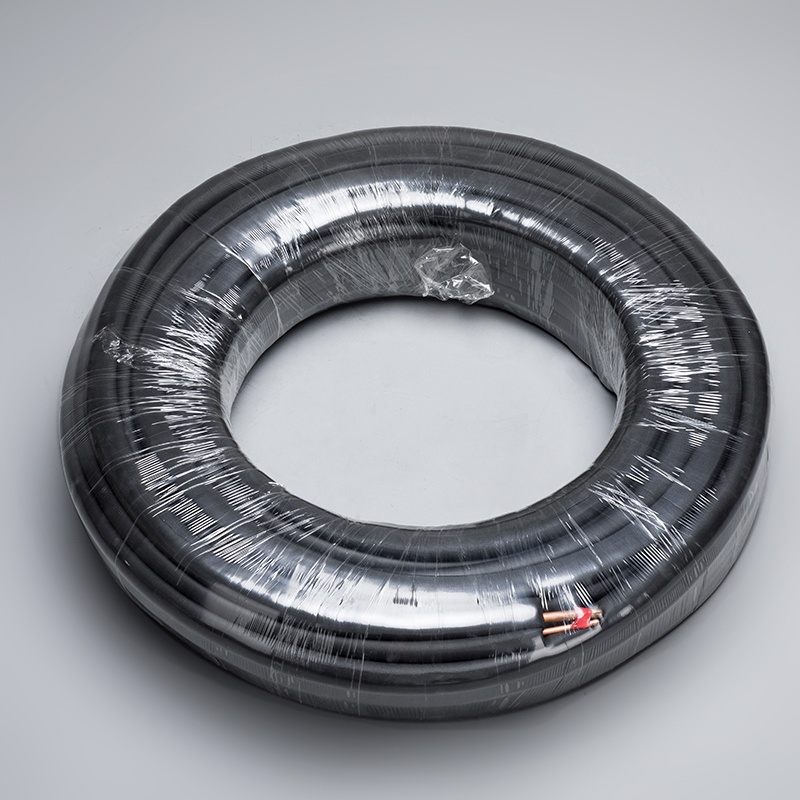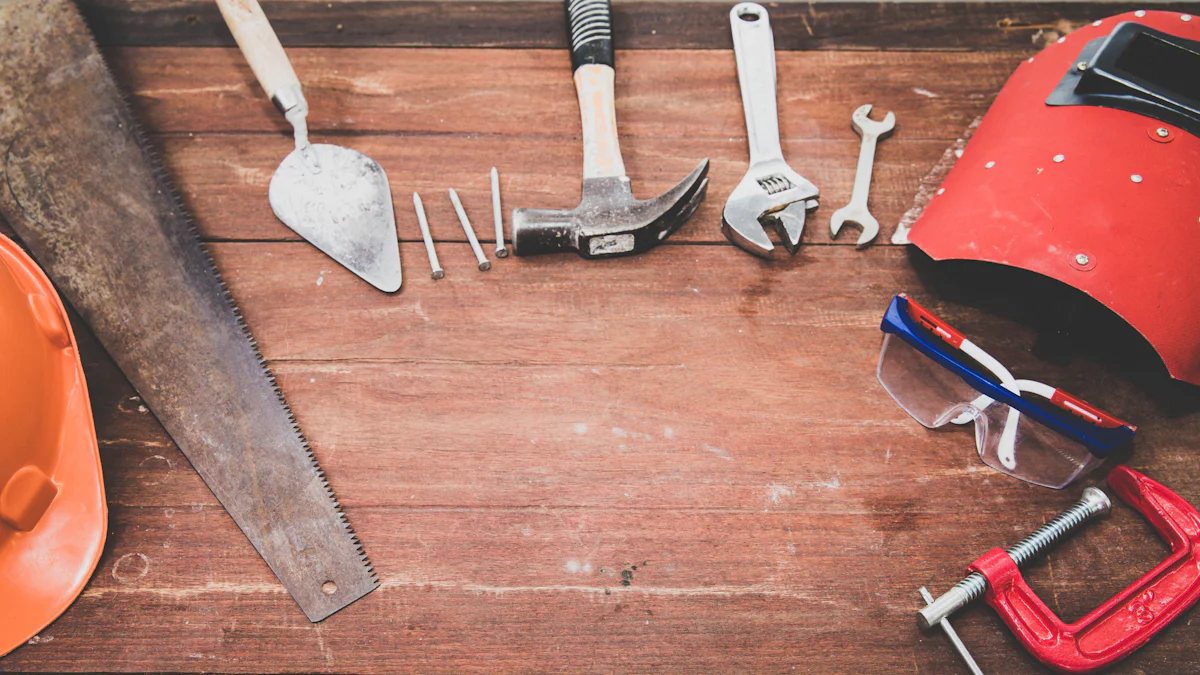How to Insulate Copper Pipes in Air Conditioners: A Step-by-Step Guide

How to Insulate Copper Pipes in Air Conditioners
Insulating copper pipes in air conditioners is a crucial step towards achieving energy efficiency and cost reduction. By preventing heat loss and condensation, insulating copper pipes ensures optimal performance of your cooling system. Additionally, it significantly reduces noise levels, providing a quieter environment. The prevention of freezing is another key benefit, safeguarding your pipes from potential damage. This guide will walk you through the step-by-step process to effectively insulate copper pipes in air conditioners, ensuring long-term savings and peace of mind.
Tools and Materials Needed

When preparing to insulate copper pipes in air conditioners, it is essential to have the right tools and materials at hand. Ensuring you have the necessary equipment will streamline the insulation process and guarantee a successful outcome.
Essential Tools
To begin, Measuring Tape plays a crucial role in accurately determining the length of foam pipe sleeves needed for each section of the copper pipes.
A Utility Knife is indispensable for cutting foam pipe sleeves with precision, ensuring they fit snugly around the pipes without leaving gaps.
Utilize a Pipe Cutter to neatly trim any excess foam pipe sleeve material, providing a clean finish to your insulation project.
Required Materials
Foam Pipe Sleeves are fundamental components in insulating copper pipes effectively. They provide thermal protection and prevent heat loss or condensation buildup.
Consider using Pipe Wrap, which offers an additional layer of insulation to enhance energy efficiency and maintain optimal performance.
Adhesive Tape is essential for securing the insulation in place, preventing it from shifting or coming loose over time.
Don't forget about Insulation Covers for Outdoor Taps, as they help maintain consistent temperatures and protect exposed areas from external elements.
Step-by-Step Guide

Measure the Pipes
To ensure a precise fit for the insulation, Accurate Measurement Techniques are essential. Begin by measuring each section of the copper pipes meticulously, accounting for any bends or curves. This step is crucial in determining the correct length of foam pipe sleeves required to cover the pipes adequately. Remember, precision in measurement directly impacts the effectiveness of the insulation.
Cut the Insulation
When it comes to Cutting Foam Pipe Sleeves, accuracy is key. Utilize a sharp utility knife to make clean and straight cuts along the foam material. Ensure that each piece fits snugly around the copper pipes without any gaps or overlaps. Safety is paramount during this process, so always handle the utility knife with care and attention.
Install the Insulation
Proper installation of insulation is vital for long-term efficiency. Start by Applying Foam Pipe Sleeves onto the copper pipes, starting from one end and working your way along. Secure the sleeves in place using adhesive tape, ensuring they are tightly wrapped around the pipes. This step not only prevents heat loss but also minimizes condensation buildup.
Insulate Gaps and Outdoor Taps
Enhancing Energy Efficiency Through Insulating Gaps in Walls
Insulating the gaps where copper pipes pass through walls is a critical step in optimizing energy efficiency and safeguarding your plumbing system. By adding insulation to these areas, you create a barrier that significantly reduces heat loss and prevents freezing, ultimately enhancing the overall performance of your air conditioning system. The precise application of insulation around these gaps ensures a tight seal, minimizing thermal transfer and maintaining consistent temperatures within your living space.
Utilizing Insulation Covers for Outdoor Taps
When it comes to outdoor taps connected to copper pipes, utilizing insulation covers is key to preserving their functionality and protecting them from external elements. These covers act as shields against temperature fluctuations and weather conditions, ensuring that your outdoor taps remain insulated and operational throughout the year. By incorporating insulation covers into your maintenance routine, you not only extend the lifespan of your outdoor taps but also contribute to the overall efficiency of your air conditioning system.
Scientific Research Findings:
Study Title: "Insulate Copper Pipes: Enhancing Energy Efficiency"
Key Findings: Adding insulation reduces heat loss, prevents freezing, and improves performance.
Published on: June 1, 2024
Journal: copperpipe.net
Additional Tips
Choosing the Right Insulation
Foam vs. Rubber Insulation
When deciding between foam and rubber insulation, individuals should consider the specific requirements of their air conditioning system. Foam insulation is known for its thermal properties, effectively preventing heat loss and condensation buildup. On the other hand, rubber insulation offers durability and flexibility, making it suitable for varying pipe shapes and sizes. Understanding the distinct advantages of each type can help users make an informed decision based on their insulation needs.
Benefits of PE Foam Insulation
PE foam insulation, such as Tubolit® and Tundra®, presents numerous benefits for residential plumbing applications. This type of insulation is renowned for its thermal efficiency and moisture resistance, ensuring long-term protection for copper pipes in air conditioners. By utilizing PE foam insulation, individuals can effectively prevent freezing, maintain consistent temperatures, and reduce energy consumption. Its ease of installation and cost-effectiveness further enhance its appeal as a reliable solution for insulating copper pipes in air conditioning systems.
Maintenance and Inspection
Regular Checks for Wear and Tear
Regular inspection plays a vital role in maintaining the integrity of insulated copper pipes. Conducting periodic checks allows individuals to identify any signs of wear or damage promptly. By inspecting the insulation for tears, gaps, or compression, users can address potential issues before they escalate into larger problems. This proactive approach to maintenance ensures that the insulation continues to function optimally, providing efficient thermal protection for the copper pipes.
Replacing Damaged Insulation
In cases where insulation shows signs of wear or damage beyond repair, prompt replacement is necessary to uphold the system's efficiency. By replacing damaged insulation with new materials, individuals can restore the thermal barrier around copper pipes effectively. This preventive measure not only prevents heat loss but also safeguards the pipes from condensation and freezing risks. Prioritizing timely replacement of damaged insulation contributes to prolonging the lifespan of air conditioning systems while maximizing energy savings.
Professional Help
When to Call a Professional
Recognizing when professional assistance is required is essential for complex insulation projects or extensive damage scenarios. Individuals should consider seeking professional help if they encounter challenges during installation or encounter significant issues with existing insulation. Professionals possess the expertise and tools necessary to address intricate problems efficiently while ensuring optimal performance of insulated copper pipes in air conditioners.
Benefits of Professional Installation
Opting for professional installation services offers several advantages, including precision workmanship and industry knowledge. Professionals are equipped to handle various types of insulating materials and techniques tailored to specific requirements. Their experience enables them to navigate complex installations with ease, ensuring seamless coverage and maximum thermal efficiency for copper pipes in air conditioners. By entrusting professionals with the task, individuals can enjoy peace of mind knowing that their air conditioning system is well-insulated by experts in the field.
Insulating copper pipes is a fundamental practice for enhancing energy efficiency and preventing freezing. By following the detailed steps outlined in this guide, individuals can ensure optimal performance of their air conditioning systems. It is crucial to maintain the insulation regularly and replace any damaged materials promptly to uphold efficiency. Embracing potential advancements in insulation technology can further elevate the effectiveness of copper pipe insulation, leading to increased cost savings and improved system longevity. Stay informed about new developments to make informed choices for your insulation needs.
See Also
Enhance Air Conditioner Performance with Copper Pipe Insulation
Benefits of Selecting Copper Tubing for Air Conditioners
The Transformation of Air Conditioning with Pure Copper Tubes
Effortless Guide to Professional Installation of Copper AC Tubes
Discovering the Cooling Wonders of Pure Copper Tubing in ACs


